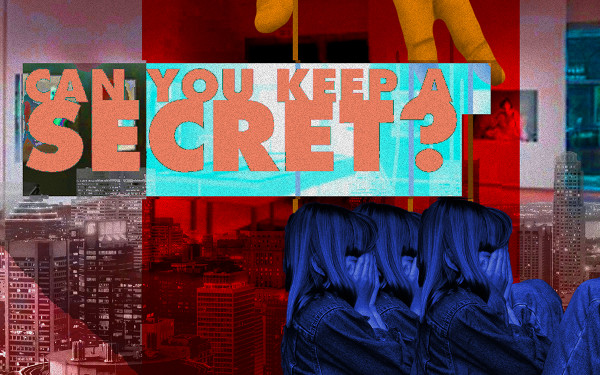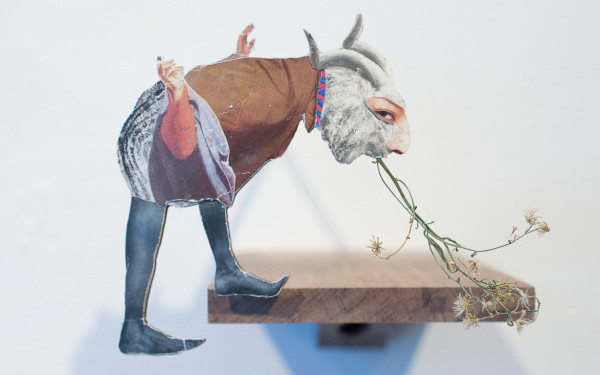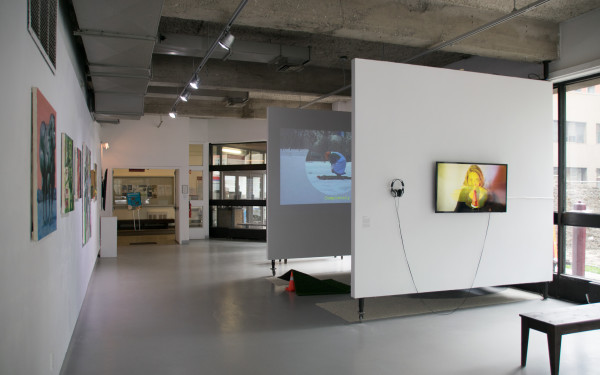Art, Stuff
16th Edition of Art Matters Challenges Memory, Habits and Materialism
Art is the home videos of family rituals, beeswax painted black or inane objects in a studio apartment that serve no purpose, like a fridge of oil canvases.
For Miles Petrella, curator of We, “Other,” an exhibition within this year’s Art Matters festival, inspiration comes from the Baroque and Rococo eras of lavish lifestyles.
“With We, “Other,” I wanted to recontextualize it in a contemporary art context, to see if the same issues could be represented today,” Petrella said.
The show at the POPOP Gallery features photographs, paintings and textiles by fellow Concordia student artists about everyday objects and ornaments that represent decadence. A series of self portraits using models by Laurence Philomene will include outfits and the wig used on site.
A choose-your-own adventure through the web-based “Mall Walk” by Katherine Lewis contributes to an immersive experience, according to Petrella.
The name of the exhibit comes from the title of the first part of Michel Foucault’s The History of Sexuality, “We ‘Other Victorians,’” said Petrella, who is studying studio arts as a major and sexuality studies as a minor.
Themes of materialism and consumption are also present in Power Plant, a one-day installation and performance at Skol.
The show analyzes personal relationships with objects and fetishization of products, according to co-curator Bianca Hlywa.
“This show takes that back by asking, where did that start from in nature, and how has the fetishization of objects evolved over time?” Hlywa said. “We see this with iPhones or whatever, like they’re becoming part of us.”
The show, curated with Geneviève Lebleu, begins in the forest with “natural” objects. A man makes his way through the underbrush and tries to grab rocks with his hands. Another piece uses beeswax, painted black and abstract-shaped, put in cases as though it were in a museum.
A cement block, a chain and a piece of velvet, a robot with tiny legs, using them to paint with oil on a canvas, a woman strapped to an office chair in floral fabric with a sensor on her head, and other performances, including an artist singing with a mic in her vagina, make up Power Plant.
“You have to go away from the rulebook,” Hlywa said. “If I used a microphone normally, nobody would question the relationship with the microphone.”
Art Matters is currently in its 16th year of existence as one of the largest student-run arts festivals, Rox but still struggles to “go away from the rulebook.” Organizers have questioned how Art Matters can be more inclusive to a broader community, while limited to a one-year mandate, says Roxane Halary, the festival’s outreach coordinator.
“How do you translate a commitment to social justice and representation to outreach?”
This can be difficult since the festival’s permanence—at least for the foreseeable future—is based in Concordia university and primarily its fine arts programs.
“Who is admitted to the fine arts faculty, and who is applying to fine arts?” said Fannie Gadouas, Art Matters exhibitions coordinator. “It comes down to looking at larger institutions of power.”
Challenging the norm is also an internal battle—coordinators try to encourage participation by artists of diverse media, to counter Art Matters’s tendency towards being visual arts-centred.
“The curators hope viewers will come in and navigate the space in a nonlinear way and build their narrative as they make their way,” said Fannie Gadouas.
In an effort to accomplish this, the three coordinators, Gadouas, Halary and administrative coordinator naakita feldman-kiss, reevaluated some of the processes in place for soliciting artwork and curator pitches.
This involved changing the descriptions of curators—students responsible for the direction of a show—to include directors, encouraging performance and video art. Submissions were made anonymously.
Instead of being selected by coordinators, a shortlist of curators and directors was selected by a jury, which included Eunice Bélidor from artist-run gallery articule, fine arts Dean Rebecca Duclos and Mohawk artist skawennati.
The final eight shows were decided after interviews by the coordinators. articule also hosted a workshop for curators on how to write statements, select artwork and the ethics of being a good curator.
“We selected curators that we thought had strong vision,” Fannie said. “But in the end, coordinators, like me, have no control over the artistic content that goes into the festival.”
Gadouas was responsible for finding galleries to host the exhibitions. I Think You Can Dance, Canada, an exhibition about national identity, will set up in a central neighbourhood with a distinct Quebecois personality. The show opens this Friday at Hochelaga-based GHAM & DAFE Gallery.
Never Again is a one-day event situated in Never Apart, an office space-turned-gallery, which Gadouas says will emulate a maze.
“It has a lot of nook and crannies,” Gadouas said. “The curators hope viewers will come in and navigate the space in a nonlinear way and build their narrative as they make their way.”
Space is central to Stay Awhile, also a one-day show curated by Olivia Rose Mansveld. The exhibition is set in an Airbnb listing by a Concordia student—a typical studio apartment, only the curtain is made of cigarette butts, the food is artificially sculpted, the bed sheets have markings and the fridge is reconstructed with oil paintings.
“I’ve been moving quite a bit lately,” Mansveld said. “Every time I would move, I’d need to reassemble, then take it down and reassemble it.
The process of building this felt like an art project—but I didn’t call it that, because it’s not in the public realm.”
Stay Awhile is a speculative look into the life of an apartment inhabitant at 5282 St. Laurent Blvd., and a fascination with how people build homes and deal with their bad habits.
The show hovers between performance art, sculpture and assemblage art. It contrasts public and private space, which almost always brings up family memories.
Sarah Riley Mathewson tackles ancestral memory and the idea of trying to make sense of things through art projects in Stories We Tell—a namesake of Sarah Polley’s acclaimed documentary.
“These stories can become folkloric, because when you hear these stories from family that might have happened before you were born, they turn into these fairy tales about people you know, [or] you’ve never met,” Mathewson said.
Sophie Auger’s letters to future children, presented in the exhibition, instead plunges into the future. An Etch-A-Sketch that can’t be erased by Feliz Tupe speaks to the permanence of family and links to childhood.
A box containing videos of family rituals by Rae Lavande Pellerin is a voyeuristic approach to other people’s memories, or memories that don’t belong to you, says Mathewson.
On top of the eight shows spread out over nearly three weeks of March, Art Matters organized a launch party, a Nuit Blanche event and also worked with other groups fine arts speakers series leading up to the festival.
Now in full force, Art Matters runs until March 26 and the final panel in the speaker series—entitled “Critical Trolling”—takes place March 11.

_600_832_s.png)




